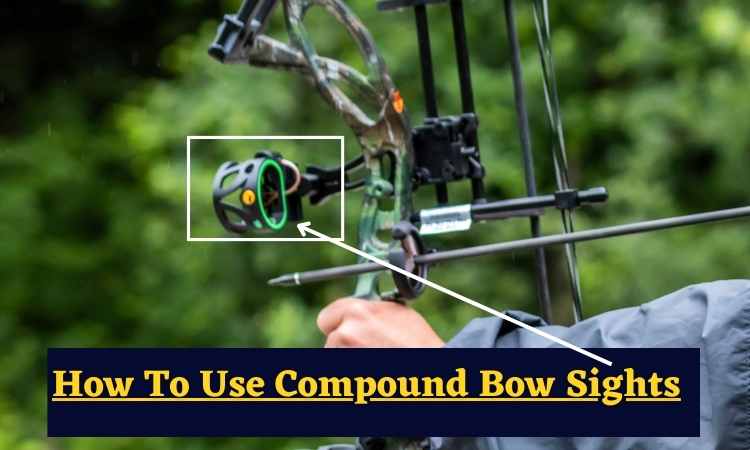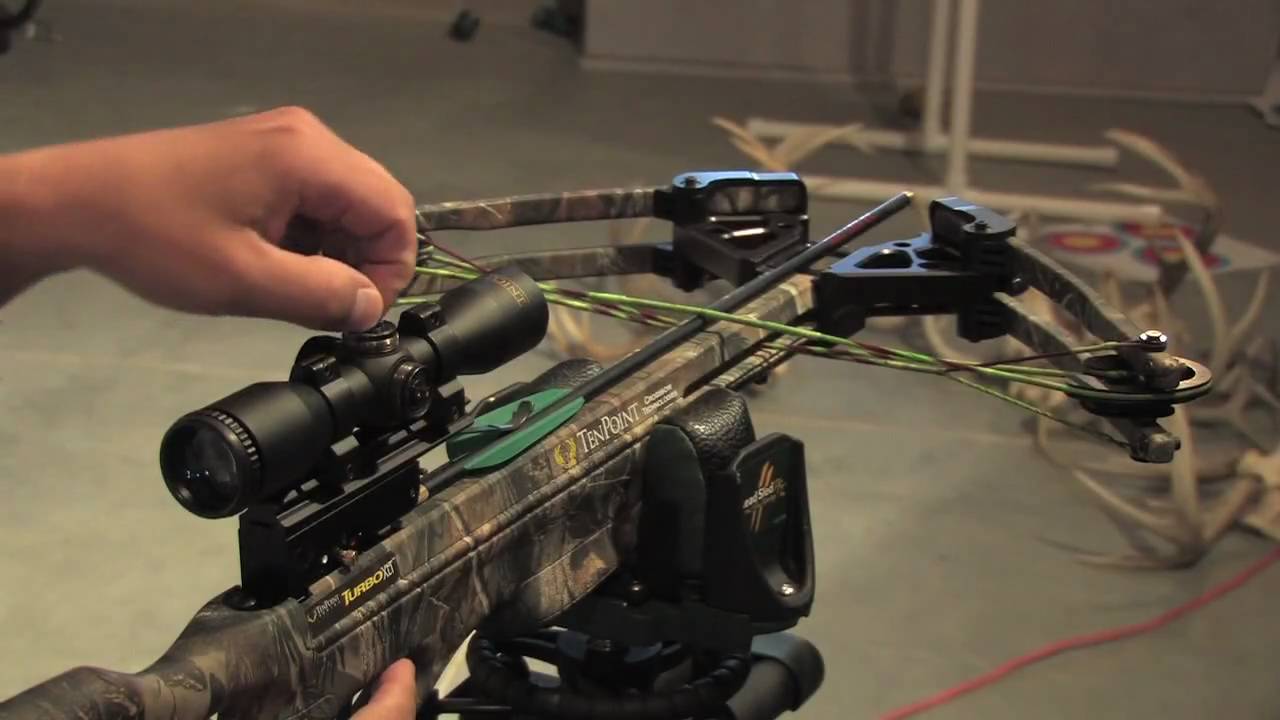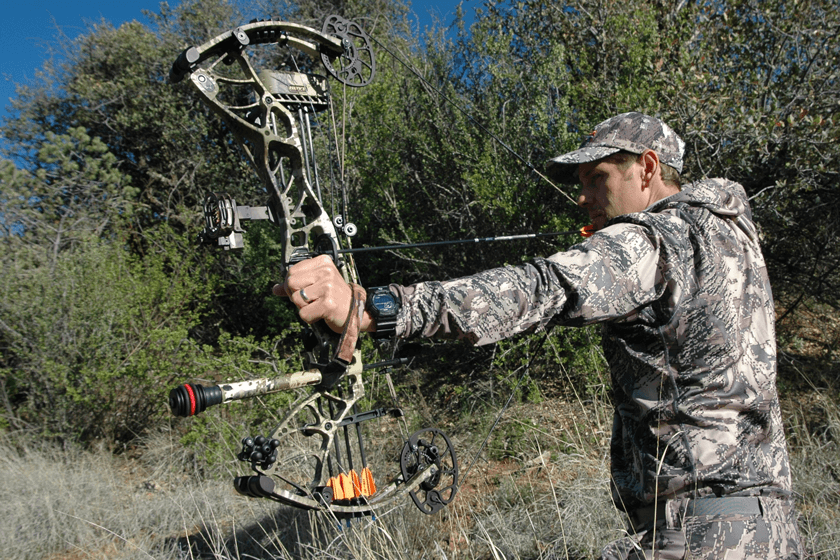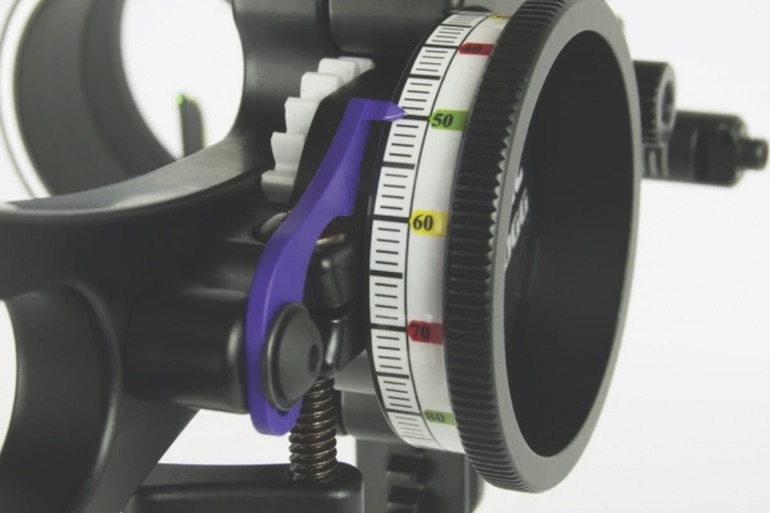In this article, we will extensively discuss the process of sighting in a multipin bow sight, which is widely preferred by bow hunters.
With this type of sight, each pin is calibrated to a specific yardage, ensuring accurate aiming. The most prevalent setup for a 5-pin sight includes yardages of 20, 30, 40, 50, and 60 yards.
Normally, there is a 10-yard interval between each pin, although some individuals may choose to extend it to 20 yards.
However, it’s important to note that 20-yard gaps are more commonly found in 3-pin sights. In such cases, a typical 3-pin sight configuration might consist of yardages set at 20, 40, and 60 yards.
How to Use Single-Pin Compound Bow Sights?
Single-pin sights are the simpler of the two options, as they only have one pin to align with the target.
Key Points of Single Pin Bow Sight:
- Single-pin sights feature one adjustable aiming point for precise targeting at various distances.
- They utilize sight tapes, which display yardage marks, aiding in sight adjustments.
- Sight tapes must be matched to arrow speed for accurate distance measurements.
- Single-pin sights allow for direct aiming behind the pin, regardless of the shooting distance.
- There is no need for “gap shooting” as seen in multi-pin sights.
- Single pins maintain a clutter-free scope housing and sight picture.
- They eliminate the risk of accidentally aiming with the wrong pin.
- One drawback is that if the target moves to a different distance after setting the pin, adjustments or estimations are required.
- Modifying setup elements like draw weight or arrows may necessitate changing sight tapes.
- Adhesive sight tapes require replacement, while some sights offer more convenient metal sight tapes.
- Finding an exact match for shooting preferences can be challenging if none of the included sight tapes align perfectly.
In different situations, single-pin bow sight is more convenient than multipin. So keep in mind these points and make your chance stand still.
Step 1: Adjust the sight to your preferred distance setting.
Single-pin sights allow the archer to adjust the pin to their preferred distance setting.
This can be done by using a locking mechanism or by manually sliding the pin to the desired position.
Whether the target can be a variable distance but you must keep your sight for the exact distance.
Step 2: Line up the single pin with your target.
After setting the single-pin sight to the desired distance using the sight tape, the next step is to align the single pin with the target.
To accomplish this, the archer peers through the peep sight, a small aperture located on the bowstring, and focuses on the target while simultaneously aligning the single pin with it within the sight scope.
The peep sight acts as a reference point, allowing the archer to maintain consistent form and aim.
By aligning the single pin and the target within the scope, the archer ensures accurate targeting for the specific distance set on the sight.
This precise alignment eliminates any guesswork or estimation and enables the archer to confidently aim directly at the target.
Step 3: Aim and release the arrow.
With the pin aligned with the target, the archer can then aim and release the arrow.
It’s important to keep a steady hand and maintain proper form when shooting to ensure accuracy.
How to Use Multi-Pin Compound Bow Sights
Mastering the use of multi-pin compound bow sights involves a strategic approach that ensures precise targeting and optimal performance.
Here’s how to effectively utilize multi-pin sights for enhanced accuracy in bowhunting:
Multi-pin sights feature scopes equipped with multiple pins, typically ranging from three to seven. Each pin is set to a specific distance, usually indicated in yards.
Take the time to familiarize yourself with the configuration of your multi-pin sight, understanding the corresponding distances assigned to each pin.
For instance, a five-pin sight might have pins set at 20, 30, 40, 50, and 60 yards.
Next things, One of the significant advantages of multi-pin sights is the ability to adapt your aiming point swiftly.
When coming to full draw, you can easily adjust your aim by moving your arm to align a different pin with your desired target.
This flexibility allows for seamless target acquisition, even if the prey moves or the shooting scenario changes.
It eliminates the need to let down the bow and readjust the sight, ensuring a more efficient and effective shooting process.
However, multi-pin sights can aid in range estimation, especially when time is limited or a rangefinder is unavailable.
With practice, archers learn to gauge distances based on the positioning of the target relative to the pins.
Over time, you can develop a sense of how large objects appear in relation to the pins. For instance, the torso of a deer positioned 30 yards away might align perfectly between the 20 and 30-yard pins.
By recognizing these visual cues through sight, you gain a valuable distance reference to inform your aim.
So are there any Potential Pitfalls?
While multi-pin sights offer numerous advantages, it’s essential to remain aware of potential pitfalls.
Accidentally aiming with the wrong pin can lead to missed shots, compromising your hunting success.
Stay attentive and ensure you’re aligning your aim with the intended pin for the desired distance.
Additionally, the presence of multiple pins can create a cluttered sight picture, potentially hindering your ability to focus on a specific aiming point.
Practice maintaining a clear visual focus to mitigate distractions caused by unused pins.
Now faced with the decision, which sight would I select?
The choice between single-pin and multi-pin sights ultimately depends on personal preference and shooting style.
Experimenting with both types can help you determine which sight suits you best.
Consider factors such as shooting distance variability, target movement, ease of adjustment, and overall shooting comfort.
What are the main differences between single-pin and multi-pin compound bow sights in terms of functionality and usage?
In different aspects, both pins should work fine as you want, if you’re professional.
But to whom are beginners and want to know? then get the idea by following this comparison table.
| Aspect | Single-Pin Sights | Multi-Pin Sights |
|---|---|---|
| Functionality | One aiming point that can be adjusted for different distances | Scopes with several pins, each set to a specific distance |
| Distance Adjustment | Adjust the aiming point by bringing a new pin onto the target | May require readjustment if the target moves or the shooting scenario changes |
| Sight Tape Requirement | Yes, requires a sight tape for accurate distance markings | Not applicable |
| Gap Shooting | Eliminates the need for “gap shooting” | Not applicable |
| Sight Picture | Clutter-free with only one pin to focus on | Multiple pins can make the sight picture appear cluttered |
| Target Movement | May require readjustment if the target moves or shooting scenario changes | Allows quick adaptation without having to let down the bow |
| Range Estimation | Not applicable | Assists in range estimation as archers learn to gauge distances based on the alignment of the target with the pins in the sight picture |
| Personal Preference | Depends on individual preferences and shooting style | Depends on individual preferences and shooting style |
How can range estimation skills be improved when using multi-pin sights, especially without a rangefinder?
Improving range estimation skills when using multi-pin sights, particularly in the absence of a rangefinder, requires practice and the development of key techniques.
Archers can employ several strategies to enhance their abilities in this area.
One effective approach is to familiarize oneself with the sizes of common objects or landmarks at various distances.
By observing and noting the dimensions of these reference points, archers can develop a sense of scale that aids in estimating distances accurately.
Another valuable technique is to pay close attention to how the target aligns with the pins in the sight picture.
By observing the relative position of the target in relation to the pins, archers can make informed judgments about the distance.
Furthermore, mastering the skill of judging target size can greatly contribute to distance estimation.
Comparing the apparent size of the target to the known dimensions of animals or objects can provide valuable insights into the distance.
Lastly, consistent and varied practice without relying on a rangefinder is crucial for refining range estimation skills.
Conclusion
In the final format, Single pin sights are simpler to use but may not be as accurate at longer distances, while multi-pin sights provide greater accuracy at various distances but may be more complex and distracting to use. Ultimately, the decision of which type of sight to use comes down to personal preference and the specific needs of the archer.

General Manager & Auditorial Head.
Killian Jake is a World Sports Traveler and hobbyist sports lover. By exploring different sorts of playing modules like indoor, outdoor, and many more. As for professionalism and writing, it’s helpful to give you the right suggestions on different games and sports.





![How To Use Recurve Bow Sights? [ 7 Easy Steps ] How To Use Recurve Bow Sights [ Easy Steps ]](https://sportsue.com/wp-content/uploads/2023/05/How-To-Use-Recurve-Bow-Sights-Easy-Steps-2.jpg)